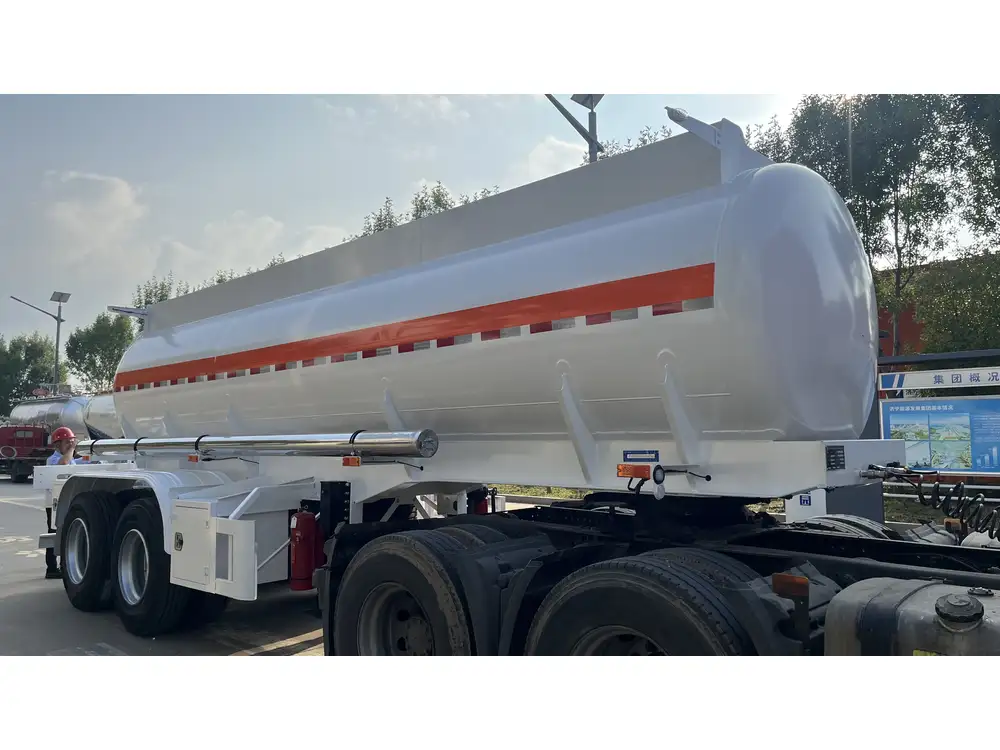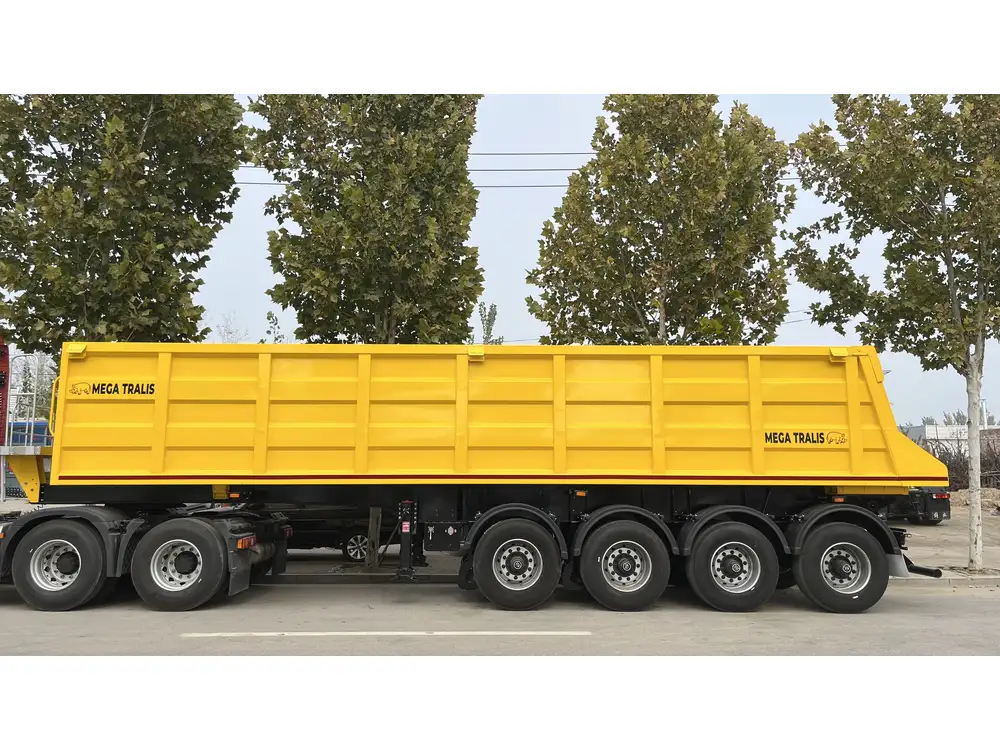The transport industry is undergoing continuous evolution, with innovations in trailer engineering significantly enhancing performance and ease of use. For owners and operators of semi-trailers, understanding the intricacies of trailer components – particularly the trailer tongue – is essential. In this comprehensive guide, we delve into the mechanics and functions of the trailer tongue and provide actionable insights regarding the question, “Can you throttle the trailer tongue to dump it?”
The Functionality of the Trailer Tongue
The trailer tongue acts as the connecting linkage between the trailer and the towing vehicle. Its pivotal role is to provide stability, control, and maneuverability, which ensure safe transport of cargo. However, the trailer tongue isn’t just a passive component; it possesses intricate designs that accommodate diverse applications.
Types of Trailer Tongues
Straight Tongue: The most common type, providing a basic connection suited for simple loading and unloading.
Curved Tongue: Designed for enhanced aerodynamics, reducing drag and improving fuel efficiency during transport.
Adjustable Tongue: Offers flexibility in length, crucial for various payloads and loading conditions.

Table 1: Tongue Comparisons
| Type | Pros | Cons |
|---|---|---|
| Straight Tongue | Simple design; cost-effective | Limited versatility |
| Curved Tongue | Improved aerodynamics; fuel efficiency | Potential for increased weight |
| Adjustable Tongue | Flexibility for various loads | More complex design; costlier |
Why the Tongue is Critical for Dumping Operations
In dumping applications, where the trailer is unloaded through gravity, the tongue’s design is crucial. A well-constructed tongue means that the center of gravity remains low, ensuring that the trailer does not tip over during the unloading process. Understanding the mechanics behind this can improve operator proficiency and safety.
The Misconception: Throttling the Trailer Tongue
The phrase “throttle the trailer tongue” may spark curiosity regarding the actual implications of such an action. It’s crucial to clarify that the term “throttle” typically refers to controlling engine power or speed. Therefore, in the context of a trailer tongue, the use of this terminology can be misleading.
Nevertheless, let’s break down the conceptual analogy:

Throttle Control Analogy
When discussing the term from an operational perspective, one might wonder if there is a method to “control” or adjust the trailer tongue in relation to unloading:
Mechanical Control: The most common type involves the mechanical manipulation of the trailer tongue positioning. There are lateral adjustments that can either lower or elevate the tongue to facilitate a smoother dumping process.
Hydraulic Systems: Some modern trailers use hydraulic mechanisms to assist in adjusting the tongue and dump angle, allowing for precise control during unloading.
Improper Methods of Changing Tongue Position
Attempting to “throttle” the trailer tongue could lead to unsafe practices. Below are some conventional methods of unloading with associated risks when done improperly:
Overloading: Excess weight on the trailer can lead policymakers to believe adjustments in tongue positioning will alleviate issues. Instead, it poses risks of structural damage.
Quick Releases: Some might be tempted to release the tongue too abruptly. Ensure you follow systematic procedures to avoid hazardous situations.
Understanding the Dumping Mechanism
To clarify the operation of trailer tongues during dumping, let’s explore the primary mechanisms employed.

Hydraulic Dump Trailers
Hydraulic dump trailers facilitate unloading through hydraulic actuators that lift the front of the trailer. The following steps explain how the trailer tongue interacts with hydraulic systems:
Lifting Operation: Engaging the hydraulic system raises the trailer’s front end, which in turn influences the trailer tongue angle.
Unload Mode: Once the desired angle is achieved, cargo is dumped effectively, with the tongue maintaining structural integrity throughout the process.
Return Cycle: After dumping, the hydraulic system retracts, lowering the trailer back to its resting position.
List of Advantages of Hydraulic Systems
- Increased unloading speed
- Enhanced control and precision
- Extended operational lifespan of the trailer
Gravity Dump Trailers
Gravity dump trailers rely entirely on the gravitational pull for unloading, without requiring complex hydraulic systems. Here’s how they coordinately function:
Tilt Mechanism: The angle of the trailer tongue is tilted upwards—this can be adjusted mechanically—enabling the cargo to slide out safely.
Safety Features: Most gravity dump trailers include safety locks ensuring the tongue remains secure, preventing unwanted accidents.
Stability Maintenance: Unlike hydraulic systems that can cause rapid shifts, gravity systems maintain low center gravity, retaining stability as items are unloaded.

Preventing Unloading Mishaps
While unloading, it’s vital to maintain safety protocols to prevent accidents.
Safety Tips for Dumping Operations
Always Inspect the Equipment: Regularly assess the condition of the tongue and unloading systems for wear and tear.
Adhere to Weight Limits: Understand the loading guidelines to prevent overstress on the tongue and trailer structure.
Train Operators: Each user handling the trailers must be skilled in recognizing the operational limits and safety practices.
Conclusion: Responsible Management of Trailer Operations
In conclusion, while the notion of “throttling the trailer tongue” may create imagery of control over trailer operations, it’s essential to approach such concepts with a clear understanding of mechanical designs and intended functionalities. Efficient trailer operation combines knowledge of components with relevant safety practices to ensure effective and smooth unloading, which ultimately enhances productivity and safety.
By understanding the types of trailer tongues, their operational principles, and aligning your expectations with real-world mechanics, operators can achieve remarkable results in semi-trailer management. This expertise not only boosts operational success but also lays the groundwork for better safety protocols, ensuring that your transportation business effectively meets industry demands and standards.

Call to Action
For those seeking further insights into trailer management or contemplating an upgrade, consider scheduling a consultation with our experts. We’re here to assist in ensuring your operation runs flawlessly.



